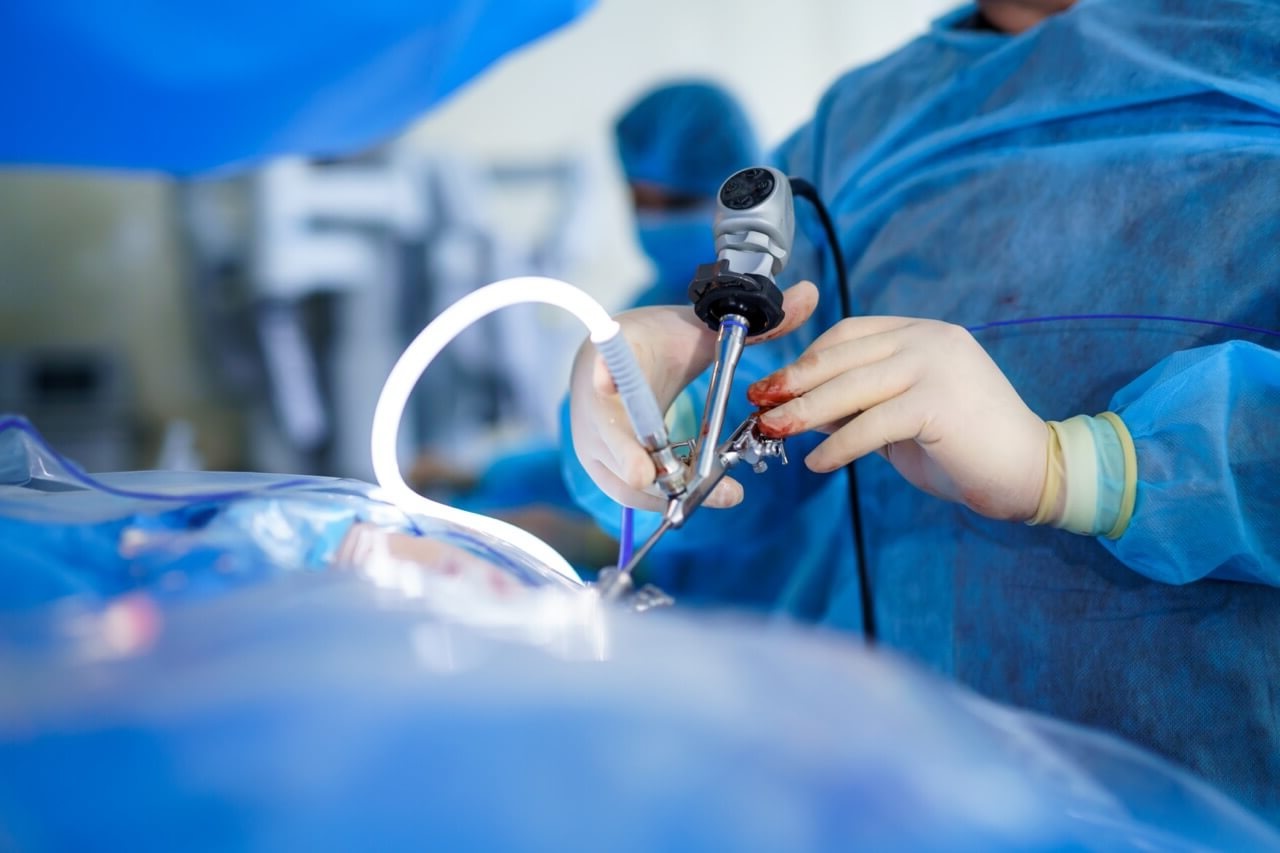
What is laparoscopy? Laparoscopy, often called minimally invasive surgery, is a technique where surgeons use small incisions and a camera to perform operations inside the abdomen. This method offers several benefits over traditional surgery, including quicker recovery times, less pain, and smaller scars. Why is laparoscopy important? It allows doctors to diagnose and treat various conditions with less risk and discomfort for patients. How does it work? A tiny camera, called a laparoscope, is inserted through a small cut, giving surgeons a clear view of the internal organs on a monitor. This approach has revolutionized many surgical procedures, making them safer and more efficient. What conditions can be treated with laparoscopy? From gallbladder removal to hernia repairs, this technique is versatile and widely used. Let's dive into 29 fascinating facts about laparoscopy that highlight its significance and benefits.
What is Laparoscopy?
Laparoscopy is a minimally invasive surgical procedure used to examine organs inside the abdomen. It involves small incisions and the use of a camera to guide the surgery.
- Laparoscopy is also known as keyhole surgery due to the small incisions used.
- The procedure uses a laparoscope, a long, thin tube with a high-intensity light and a high-resolution camera at the front.
- Surgeons can view the inside of the abdomen on a video monitor, making the surgery less invasive.
- Laparoscopy is often used for diagnostic purposes, such as identifying the cause of abdominal or pelvic pain.
- It can also be used for surgical treatments, including removing organs like the gallbladder or appendix.
History of Laparoscopy
Understanding the history of laparoscopy helps appreciate its evolution and significance in modern medicine.
- The first laparoscopic procedure was performed by Dr. Georg Kelling in 1901.
- Dr. Hans Christian Jacobaeus is credited with performing the first laparoscopic surgery on humans in 1910.
- Laparoscopy gained popularity in the 1980s and 1990s due to advancements in technology and surgical techniques.
- The introduction of fiber optics in the 1960s revolutionized laparoscopy by improving visualization.
- The development of robotic-assisted laparoscopy in the 21st century has further enhanced precision and outcomes.
Benefits of Laparoscopy
Laparoscopy offers numerous advantages over traditional open surgery, making it a preferred choice for many procedures.
- Smaller incisions lead to less scarring and quicker recovery times.
- Patients experience less pain post-surgery compared to open surgery.
- The risk of infection is lower due to the smaller incisions.
- Shorter hospital stays are common, often allowing patients to go home the same day.
- Laparoscopy provides better cosmetic results due to minimal scarring.
Common Uses of Laparoscopy
Laparoscopy is versatile and can be used for various diagnostic and therapeutic purposes.
- It is commonly used to remove the gallbladder in a procedure known as cholecystectomy.
- Appendectomy, the removal of the appendix, is often performed laparoscopically.
- Laparoscopy is used in gynecology to treat conditions like endometriosis and ovarian cysts.
- It can help diagnose and treat hernia by repairing the abdominal wall.
- Bariatric surgery for weight loss, such as gastric bypass, is frequently done laparoscopically.
Risks and Complications
While laparoscopy is generally safe, it is not without risks and potential complications.
- There is a small risk of bleeding and infection at the incision sites.
- Organ damage can occur if the instruments accidentally puncture or cut nearby organs.
- Adverse reactions to anesthesia are possible, as with any surgical procedure.
- Blood clots can form, particularly in the legs, which can be dangerous if they travel to the lungs.
- In rare cases, hernia can develop at the incision sites.
Recovery and Aftercare
Proper recovery and aftercare are crucial for a successful outcome following laparoscopic surgery.
- Patients are usually advised to avoid heavy lifting and strenuous activities for a few weeks.
- Pain management is typically achieved with over-the-counter pain relievers.
- Follow-up appointments are necessary to monitor healing and address any complications.
- Dietary adjustments may be recommended, especially after procedures involving the digestive system.
Final Thoughts on Laparoscopy
Laparoscopy has revolutionized modern surgery. This minimally invasive technique offers quicker recovery times, less pain, and smaller scars compared to traditional methods. It's used for diagnosing and treating various conditions, from gallbladder issues to endometriosis. Patients benefit from shorter hospital stays and faster returns to daily activities. However, it's not suitable for everyone. Some complex cases still require open surgery. Always consult with a healthcare professional to determine the best approach for your situation. The advancements in laparoscopic technology continue to improve outcomes and expand its applications. Staying informed about these developments can help you make better healthcare decisions. Laparoscopy represents a significant leap forward in surgical care, providing numerous benefits while minimizing risks. Whether you're facing surgery or just curious, understanding laparoscopy's impact can be empowering.
Was this page helpful?
Our commitment to delivering trustworthy and engaging content is at the heart of what we do. Each fact on our site is contributed by real users like you, bringing a wealth of diverse insights and information. To ensure the highest standards of accuracy and reliability, our dedicated editors meticulously review each submission. This process guarantees that the facts we share are not only fascinating but also credible. Trust in our commitment to quality and authenticity as you explore and learn with us.
